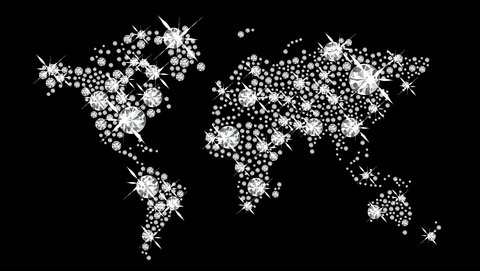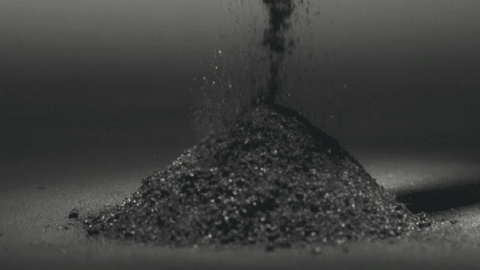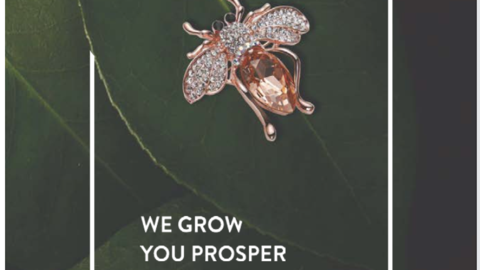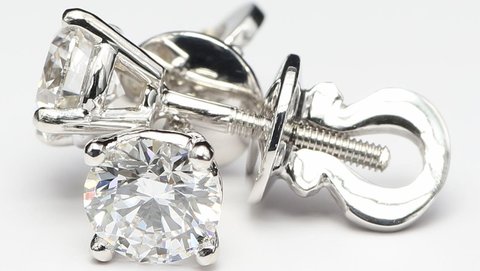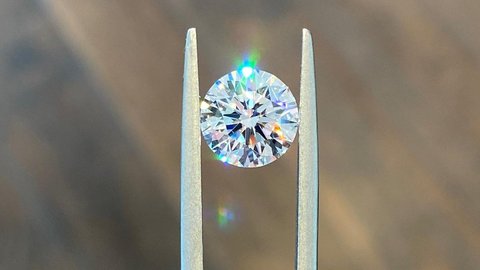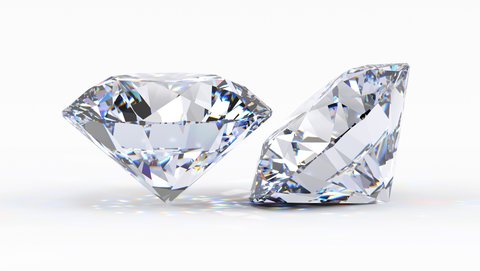How AI and Advanced CVD Diamond Technology Are Revolutionizing the Industry in 2025

Technological Innovations in Diamond Production: How AI and Advanced CVD Are Revolutionizing the Industry in 2025
Key Takeaways
- AI-powered quality assessment systems can now detect diamond imperfections with 99.8% accuracy
- Next-generation CVD techniques produce diamonds 40% faster than traditional methods
- Lab-grown diamonds now account for 35% of the global diamond market
- Machine learning algorithms predict optimal growth conditions, reducing production costs by 25%
- Quantum sensors enable real-time monitoring of diamond formation at the atomic level
Introduction: The Diamond Industry's Technological Revolution
The diamond production industry is experiencing its most significant transformation since the discovery of synthetic diamond creation in the 1950s. Today's cutting-edge technologies, from artificial intelligence to advanced Chemical Vapor Deposition (CVD) techniques, are reshaping how diamonds are produced, assessed, and brought to market.
This comprehensive guide explores the latest technological innovations revolutionizing diamond production, offering insights into how these advancements benefit both manufacturers and consumers while addressing sustainability concerns that have long plagued the traditional mining industry.

Understanding Modern Diamond Production Methods
Traditional vs. Technological Approaches
Diamond production has evolved from labor-intensive mining operations to sophisticated laboratory processes. Modern production methods leverage:
- High-Pressure High-Temperature (HPHT) systems with computer-controlled precision
- Chemical Vapor Deposition (CVD) chambers with AI-optimized parameters
- Hybrid growth techniques combining multiple technologies
- Automated quality control systems replacing manual inspection
These technological advances have reduced production time from months to weeks while improving consistency and quality.
AI-Driven Quality Assessment: The Game Changer
How Artificial Intelligence Transforms Diamond Grading
Artificial intelligence has revolutionized diamond quality assessment through:
1. Computer Vision Systems
- Analyze diamonds at 1000x magnification
- Detect inclusions invisible to human graders
- Process 500+ diamonds per hour
- Maintain consistent grading standards
2. Machine Learning Algorithms
- Predict final diamond quality during growth
- Optimize cutting patterns for maximum brilliance
- Reduce material waste by 30%
- Personalize recommendations based on consumer preferences
3. Neural Network Applications
- Real-time monitoring of growth conditions
- Predictive maintenance for equipment
- Quality prediction accuracy exceeding 99%
- Automated certification processes
Case Study: GIA's AI Integration
The Gemological Institute of America (GIA) now employs AI systems that analyze over 40 million data points per diamond, ensuring unprecedented accuracy in grading reports.
AI Diamond Grading Process
Revolutionary Technology Transforming Diamond Quality Assessment
Diamond Scanner Entry
Raw diamond is placed into high-precision scanning chamber
1000x Magnification Imaging
Advanced optical systems capture ultra-high resolution images
AI Analyzes 40M Data Points
Computer vision systems process massive datasets in real-time
Neural Network Processing
Deep learning algorithms evaluate quality parameters
Quality Grade Assigned
Automated grading based on 4Cs and advanced metrics
Blockchain Certificate Generated
Immutable digital certificate created and stored on blockchain

Advanced CVD Techniques: Faster, Better, Cleaner
Next-Generation Chemical Vapor Deposition
Modern CVD technology represents a quantum leap in diamond production efficiency:
Enhanced Plasma Control
- Microwave frequencies optimized by AI
- Temperature variance reduced to ±0.1°C
- Growth rates increased by 40%
- Energy consumption decreased by 35%
Multi-Chamber Systems
- Simultaneous growth of 50+ diamonds
- Individual chamber monitoring
- Automated substrate preparation
- Continuous production capabilities
Innovative Gas Mixtures
- Proprietary gas combinations
- Real-time composition adjustments
- Reduced impurity levels
- Enhanced color control
Breakthrough: Quantum-Enhanced CVD
Researchers at MIT have developed quantum-enhanced CVD systems that use quantum sensors to monitor carbon atom deposition in real-time, achieving atomic-level precision in diamond growth.

Emerging Technologies Shaping the Future
1. Blockchain Integration
Diamond producers now use blockchain technology to:
- Track diamonds from creation to consumer
- Prevent fraud and ensure authenticity
- Provide transparent pricing
- Enable direct-to-consumer sales
2. 3D Printing Applications
Additive manufacturing technologies enable:
- Custom diamond seed creation
- Precise inclusion placement for identification
- Complex internal structures
- Rapid prototyping of new designs
3. Nanotechnology Enhancements
Nano-scale innovations include:
- Surface treatments for enhanced brilliance
- Color modification at the atomic level
- Strength improvements for industrial applications
- Self-cleaning diamond coatings

Sustainability Through Technology
Environmental Impact Reduction
Technological innovations have dramatically reduced the environmental footprint of diamond production:
- 73% less water usage compared to mining
- 85% reduction in carbon emissions
- Zero soil displacement
- 100% renewable energy integration possible
Circular Economy Integration
Advanced recycling technologies now allow:
- Recovery of diamonds from electronic waste
- Reprocessing of industrial diamond dust
- Conversion of carbon waste into diamonds
- Closed-loop production systems

Quality Standards and Certification Evolution
Digital Certification Systems
Modern certification leverages:
- Blockchain-verified certificates
- 3D digital twins of each diamond
- AR/VR viewing capabilities
- AI-generated quality reports
International Standards Development
New ISO standards for lab-grown diamonds include:
- Production process transparency
- Environmental impact metrics
- Quality consistency measures
- Traceability requirements

Market Impact and Consumer Benefits
Price Accessibility
Technological advances have made diamonds more accessible:
- 40-70% cost reduction compared to mined diamonds
- Consistent pricing based on quality metrics
- Reduced market volatility
- Transparent pricing models
Customization Possibilities
Technology enables unprecedented customization:
- Specific color creation on demand
- Custom cut designs via AI
- Personalized inclusions for identification
- Size specifications to exact measurements

Future Outlook: What's Next?
Upcoming Innovations (2025-2030)
Industry experts predict:
- Quantum computing integration for growth optimization
- Biogenic diamonds from captured carbon
- Space-based production in zero gravity
- AI-designed molecular structures
Investment and Growth Projections
The lab-grown diamond market is projected to:
- Reach $55 billion by 2030
- Capture 50% market share by 2028
- Create 100,000+ new tech jobs
- Attract $10 billion in R&D investment
Practical Applications Beyond Jewelry
Industrial Revolution
Technological advances enable new applications:
- Quantum computing components
- Medical implant coatings
- High-performance semiconductors
- Advanced optical systems
Scientific Breakthroughs
Diamond technology contributes to:
- Cancer treatment research
- Quantum sensing applications
- Space exploration equipment
- Clean energy solutions

How to Choose Technology-Enhanced Diamonds
Consumer Guide
When selecting lab-grown diamonds:
- Verify certification includes production method
- Request blockchain verification
- Compare AI grading reports
- Consider customization options
- Evaluate sustainability metrics
Quality Indicators
Look for:
- CVD or advanced HPHT production
- AI-verified grading reports
- Blockchain traceability
- ISO certification compliance
- Manufacturer transparency
The Brilliant Future of Diamond Technology
The convergence of artificial intelligence, advanced materials science, and sustainable practices is creating a new era in diamond production. These technological innovations not only make diamonds more accessible and affordable but also address long-standing ethical and environmental concerns.
As we move forward, the continued integration of cutting-edge technologies promises even more exciting developments, from quantum-enhanced production methods to completely new applications for these remarkable materials. The future of diamonds is not just bright—it's technologically brilliant.
Whether you're a consumer looking for sustainable luxury, an investor exploring opportunities, or simply curious about technological progress, the innovations in diamond production represent a fascinating intersection of science, sustainability, and human ingenuity.
FAQ about Yellow Lab-Grown Diamonds
CVD (Chemical Vapor Deposition) grows diamonds layer by layer in a vacuum chamber using carbon-rich gases, while HPHT (High Pressure High Temperature) mimics Earth's natural conditions. CVD produces higher purity diamonds and allows better control over the growth process, making it the preferred method for jewelry-quality stones.
With AI-optimized CVD technology, a 1-carat diamond grows in 2-3 weeks, compared to 4-6 weeks with traditional CVD methods. The AI continuously adjusts temperature, pressure, and gas mixture to maintain optimal growth conditions, achieving 40% faster production.
Lab-grown diamonds typically cost 40-70% less than mined diamonds of comparable quality. However, their value retention depends on market demand rather than artificial scarcity. As technology improves and consumer acceptance grows, lab-grown diamonds are establishing their own stable market value separate from mined stones.
Ironically, yes. AI systems can identify subtle growth patterns and trace elements that distinguish lab-grown from natural diamonds with 99.9% accuracy. These same AI systems that help create perfect lab diamonds can detect microscopic differences in crystal structure that even experienced gemologists might miss.
Failed diamonds aren't wasted - they're recycled into industrial applications. Approximately 15% of CVD attempts produce diamonds unsuitable for jewelry, but these become valuable components in quantum computers, medical devices, and high-performance cutting tools, creating a zero-waste production cycle.
Modern CVD facilities use triple-redundant power systems and AI-predicted maintenance schedules. If power fails, backup systems activate within 0.3 seconds. However, even a 10-second interruption can create visible growth lines in the diamond, which is why facilities often operate their own microgrids.
Yes, manufacturers can now embed microscopic serial numbers or even QR codes inside diamonds during growth using controlled impurity placement. These invisible markers, readable only with specialized equipment, enable blockchain tracking from creation to consumer without affecting the diamond's appearance or value.
Fluorescence in lab-grown diamonds is controlled by trace amounts of boron or nitrogen introduced during growth. AI systems can now predict and control fluorescence intensity within 2% accuracy. Some manufacturers intentionally add blue fluorescence to enhance the diamond's apparent whiteness, while others eliminate it entirely for collectors who prefer non-fluorescent stones.



